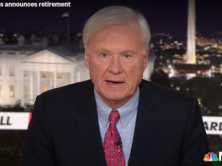
The FAA headquarters (Credit: Wikipedia, Matthew G. Bisanz)
The U.S. Federal Aviation Administration has published proposal guidelines for handling drones.
The proposal targets commercial drones and not drones used for hobby or recreation, USA Today reported. Instead the proposal, which is open for public comment, is for “drones weighing up to 55 pounds to fly within sight of their remote pilots during daylight hours.”
A summary of the guidelines is available here on the FAA’s website.
Just because the proposal is out doesn’t mean drones are ready to go yet. “The F.A.A. has worked on the rules for several years, and their release only begins a period of public comment and possible revision that could take as long as two years before they take effect,” the New York Times reported.
The Los Angeles Times noted that “until now, the FAA has banned the use of commercial drones, though the rules were not strictly enforced.” There have been exceptions, according to USA Today, including “public agencies such as local police departments” and some “commercial uses such as filming on closed television and movie sets, bridge inspections and agricultural surveys.”
CNN got one of those permits last month, as iMediaEthics reported. The permit is a “research agreement with the FAA” but CNN doesn’t get to use the drone for on-air reporting.
In 2012, iMediaEthics reported on some of the ethical issues related to using drones in journalism.
In reporting on “What the FAA’s newly proposed drone rules mean to journalists,” Poynter’s Al Tompkins talked to the National Press Photographs Association legal counsel Mickey Osterreicher and Matthew Waite, of the Drone Journalism Lab at the University of Nebraska, about the guidelines.
Osterreicher said the guidelines seem “much more common sense and less burdensome” than the NPPA was expecting.
“I think these drones will be invaluable,” Osterreicher told Poynter. “It is just another tool for us, but an important one to tell stories.”
Likewise, the Drone Journalism Lab’s Waite said the guidelines “seem shockingly sensible.”
Guidelines for people to use drones include:
- Must be 17 or older
- Pass an aeronautics test
- Approval by TSA
Drone operators won’t need a private pilot license and drones don’t need FAA certification, the Washington Post noted.
In addition to the FAA proposal, the White House set out guidelines for privacy and protections for drones. The Feb. 14 Fact Sheet from the White House Office of the Press Secretary explains the Presidential Memorandum “requires Federal agencies to ensure that their policies and procedures are consistent with limitations set forth in the Presidential Memorandum on the collection and use, retention, and dissemination, of information collected” by drones.






Comments Terms and Conditions